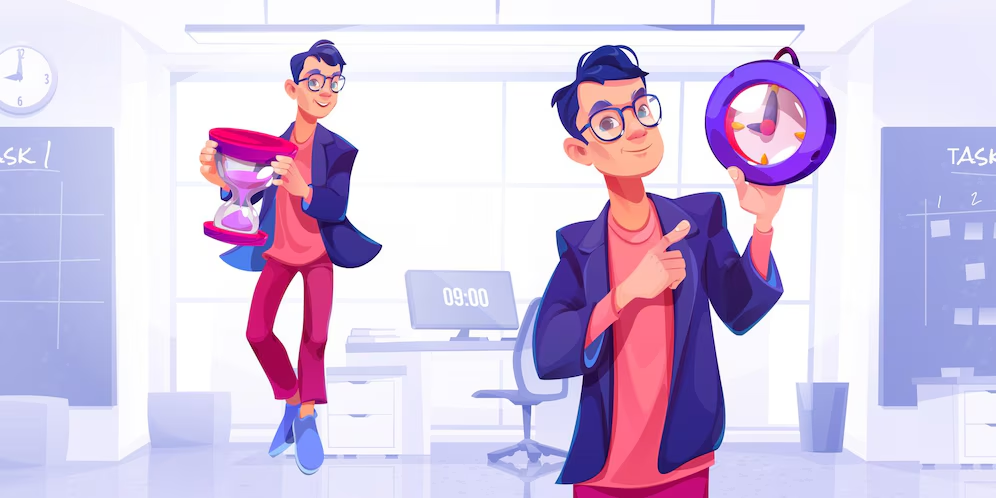Artificial intelligence (AI) is transforming sectors worldwide, opening up previously unattainable professional prospects. If you’ve ever wondered how to become an AI engineer, this guide will provide the information and methods you need to begin your path. School of Coding and AI provides an actionable route for entering this exciting and rewarding sector. Whether you’re just starting or transferring from another profession, this blog offers helpful ideas to help you succeed.
Why Pursue a Career in AI Engineering?
AI developers are at the vanguard of innovation, developing systems that can think, learn, and adapt. AI impacts all industries, from healthcare and finance to gaming and self-driving cars. Below are some strong reasons to pursue this career:
- High Demand: AI engineering positions are among the fastest expanding in technology.
- Lucrative Salaries: The average annual income for an AI engineer in the UK is between £50,000 and £80,000, with experienced specialists earning considerably more.
- Versatility: AI skills are applicable across industries.
Innovative Work: AI engineers use cutting-edge technology to address complicated, real-world problems.
Also Read – Top 10 AI Tools for Programmers Should Know in 2024
Who Can Become an AI Engineer?
This trip is open to everyone with a problem-solving mindset and a desire to learn. A background in computer science, mathematics, or engineering is advantageous but not essentially required. Many effective AI engineers have various educational and professional backgrounds.
What Skills Are Needed to Become an AI Engineer?
Here are the essential skills and knowledge areas for aspiring AI engineers:
1. Programming Skills
- Proficiency in languages such as Python, Java, and C++.
- Understanding libraries like TensorFlow, PyTorch, and Scikit-learn.
2. Mathematics and Statistics
- Understanding of linear algebra, calculus, probability, and statistics.
3. Machine Learning (ML)
- Expertise in supervised, unsupervised, and reinforcement learning approaches.
4. Data Handling
- Expertise in data collection, cleansing, and preprocessing.
5. Deep Learning
- Understanding neural networks and frameworks, such as Keras and MXNet.
6. Soft Skill
- Critical thinking, problem-solving skills, and effective communication are essential.
Step-by-Step Guide: How to Become an AI Engineer
Follow these simple measures to jumpstart your AI engineering career:
Step 1: Create a Strong Educational Foundation
- Get a degree in computer science, math, or a similar discipline.
- Alternatively, register in specialised programmes such as HNC and HND courses provided by SOC College in collaboration with the University of Wolverhampton.
Step 2: Master core skills
- Gain competence in programming, mathematics, and machine learning by taking online classes, attending coding bootcamps, or studying on your own.
- Coursera, edX, and Udemy all provide outstanding AI-related courses.
Step 3: Work on real-world projects
- Create a portfolio that highlights your skills through personal or open-source projects.
- Examples include constructing chatbots, building prediction models, and designing image recognition systems.
Step 4: Gain practical experience
- Apply to internships or entry-level positions to obtain hands-on experience.
- Consider contributing to open-source AI projects.
Step 5: Obtain relevant certifications
- Certifications in AI and machine learning, such as Google AI or AWS AI, can boost your résumé.
Step 6: Stay updated
- Follow industry trends, research papers, and breakthroughs in artificial intelligence.
- Join professional networking communities such as Kaggle, GitHub, and LinkedIn.
Step 7: Seek Advanced Education (Optional)
- A master’s or PhD in AI might lead to specialised roles and leadership opportunities.
What Jobs Are Available for AI Engineers?
AI developers have access to a wide range of work opportunities across multiple industries. Here are a few popular positions:
- Machine Learning Engineers: They create and optimise machine learning models.
- Data Scientist: Analyse and interpret complicated data to generate meaningful insights.
- AI Research Scientist: Researches to improve AI technologies.
- Computer Vision Engineers: They create systems for image and video analysis.
- NLP Engineer: Work on natural language processing applications like chatbots and virtual assistants.
- AI Solutions Architect: Develop AI-based solutions that are suited to business requirements.
- Robotics Engineer: Develop intelligent robotic systems for automation.
- AI Product Manager: Responsible for the development and deployment of AI products.
These professions frequently offer competitive wages and prospects for advancement, making AI engineering a viable career path.
The Role of School of Coding
The School of Coding and AI provides tailored programmes to equip you with the skills needed to excel in AI engineering. From beginner-friendly courses to advanced certifications, our offerings are designed to meet industry standards.
Benefits of Learning with Us:
Practical Approach: Gain hands-on experience through real-world initiatives.
Expert Advice: Learn from industry professionals and academic experts.
Flexible Learning: Classes are available both online and on campus.
Career Support: Get mentorship and placement help.
Conclusion
Starting a career as an AI engineer is both thrilling and rewarding. With the correct talents, knowledge, and commitment, you can make a significant contribution to the AI revolution. Begin your journey today with School of Coding and take the first step towards a successful and meaningful career in Artificial Intelligence.
Frequently Asked Questions
To become an AI engineer, you normally require a solid educational background in computer science, mathematics, or a similar technical discipline. Most AI engineers have at least a bachelor’s degree in computer science, data science, artificial intelligence, software engineering, or a related field. Many people obtain a master’s degree or even a PhD, particularly if they want to work in cutting-edge research or advanced algorithm development.
In addition to formal qualifications, employers search for programming language skills in Python, Java, or C++. Knowledge of machine learning frameworks (such as TensorFlow or PyTorch), statistics, linear algebra, and data structures are also necessary. Some professionals enhance their expertise through specialised certifications in AI, machine learning, or data analytics, which can be obtained through online courses or professional training programmes.
Yes, you can begin your journey into AI engineering immediately after completing your A-levels (12th standard or equivalent). The most frequent path is to pursue an undergraduate degree in Computer Science, Artificial Intelligence, Data Science, or a similar discipline. Many universities now provide specialised AI or machine learning pathways at the undergraduate level, providing students a head start in this rapidly expanding field.
Students can supplement their degree coursework with internships, online courses, coding bootcamps, and personal projects to obtain practical experience with AI tools and real-world applications. Starting early after the 12th grade allows you more time to develop a strong skill set that employers value.
While it is feasible to comprehend AI without coding, most AI engineering careers require real coding expertise. AI systems rely on algorithms and data processing, which must be devised, implemented, tested, and optimised in programming languages such as Python, R, and Java.
However, even if you have no coding experience, you can begin learning the fundamentals of AI, such as basic machine learning concepts, data handling, and ethical implications. There are other AI solutions with no-code or low-code interfaces developed for business executives or domain experts who want to use AI without having to write a lot of code.
However, if you want to be an AI engineer, you should start by learning to code. Coding allows you to construct custom AI solutions, work with enormous datasets, and build sophisticated models, all of which are essential aspects of the profession.
It usually takes 2-4 years to become proficient in AI, depending on where you start and how intensely you learn.
While a degree is useful, it is not required. Many employers prefer abilities and practical experience to academic schooling.
Common technologies include Jupyter Notebook, MATLAB, RStudio, and cloud platforms such as AWS, Google Cloud, and Azure.
AI engineers are in demand in a variety of industries, including healthcare, finance, retail, and technology.
Absolutely! Many professionals transfer into AI engineering from industries like software development.
What is an AI engineer’s salary?
An AI engineer’s income might vary greatly depending on location, level of expertise, industry, and the complexity of the tasks completed. In the UK, entry-level AI engineers can expect to earn between £35,000 and £50,000 per year. Mid-level AI developers with a few years of expertise typically earn between £55,000 and £80,000 per year.
Senior AI engineers, AI architects, or machine learning specialists working for huge corporations or IT behemoths can command salaries far above £100,000, especially when bonuses and benefits are factored in. Salaries in AI are very competitive around the world due to the high demand and comparatively low supply of experienced people.
The time required to become an AI engineer varies depending on your chosen learning path and prior experience. Most people take 3-4 years to complete a bachelor’s degree in Computer Science or a related subject.
If you want to specialise further, you’ll need to devote an extra 1-2 years to obtaining your master’s degree.
Extra time to get practical experience through internships, personal projects, or entry-level positions.
Overall, you may anticipate to spend 4-6 years honing the knowledge, abilities, and industry experience required to operate comfortably as an artificial intelligence engineer. However, motivated students can shorten this period by taking rigorous courses, working on real-world AI projects, contributing to open-source communities, and constantly upskilling.












